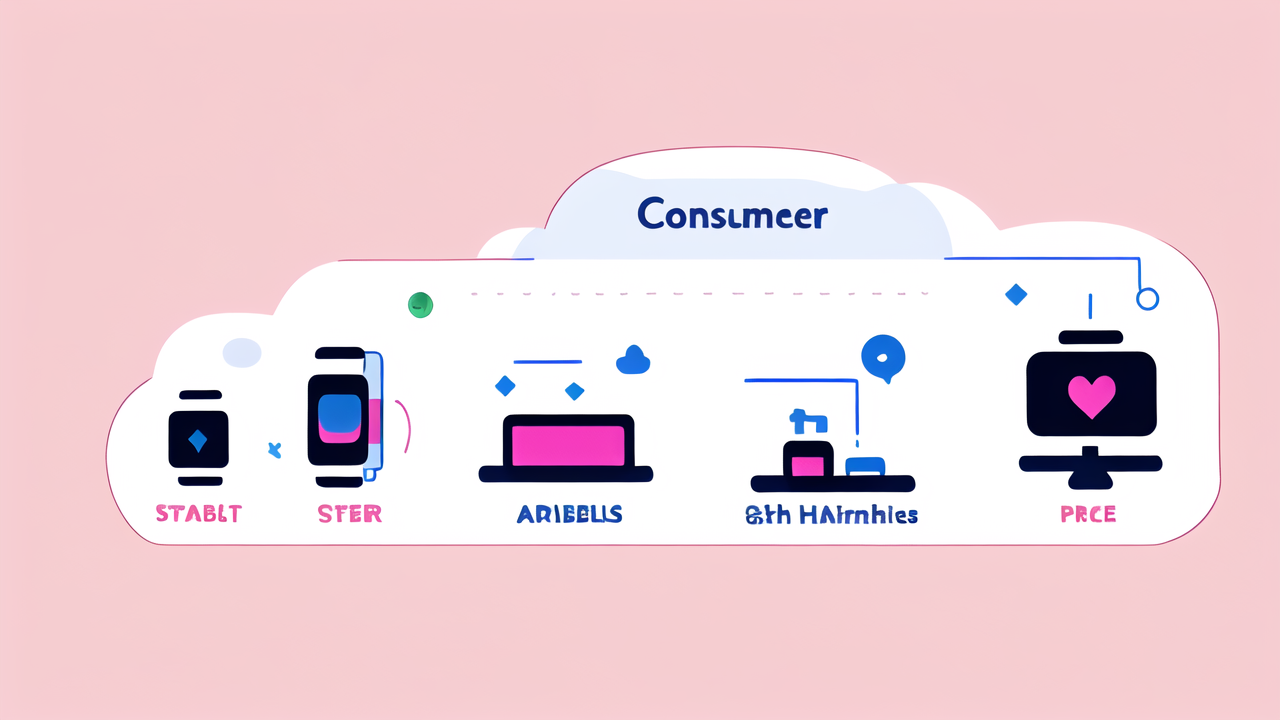Introduction to Smart Bracelets and Watches in the United States
Understanding the Rise of Wearable Technology
The rise of wearable tech in the US has been swift. Smart bracelets started as simple step counters. Now, they're complex devices that track health and more. The journey began with basic fitness trackers. These devices counted steps and estimated calories burned.

As tech improved, so did the features. Heart rate monitors were added. Sleep tracking became standard. Smart bracelets began to connect to smartphones. This allowed for notifications and data syncing. The public's interest in health and fitness fueled growth.
Companies saw potential and invested heavily. This led to rapid advancements. Sensors became more accurate. Batteries lasted longer. Designs became sleeker and more attractive. Wearables went from niche products to mainstream accessories.
The Intersection of Fitness and Fashion
Smart bracelets have evolved beyond just function. They're now fashion statements too. Early models were bulky and unattractive. They stood out, and not in a good way. Designers realized that looks matter. They started creating devices that were stylish as well as functional.
Major fashion brands entered the market. They partnered with tech companies. This blend of style and tech appealed to a wider audience. Smart bracelets became accessories you'd want to wear all day. Color options expanded. Materials improved. Some even offered interchangeable bands.
The focus on fashion didn't mean sacrificing features. If anything, it pushed innovation further. Screens got better. User interfaces became more intuitive. The line between smartwatch and smart bracelet blurred. Fashion-forward designs attracted those who previously dismissed wearables.
The Market Dynamics of Smart Bracelets and Watches
Analyzing the Consumer Demand for Smart Wearables
Consumer demand for smart wearables has surged in recent years. People want devices that enhance their lives. Health consciousness is a major driver. Many use smart bracelets to track fitness goals. Others rely on them for health monitoring.

Convenience is another key factor. Smart bracelets offer quick access to notifications. They can control music, make payments, and more. This appeals to busy consumers. The ability to customize features also drives demand. Users can choose what matters most to them.
Price points have become more diverse. This has opened up the market to more consumers. High-end models offer premium features. Budget-friendly options provide basic functionality. This range caters to different needs and budgets.
Key Players and Innovators in the Market
Several companies dominate the smart bracelet market. Fitbit was an early leader. They focused on fitness tracking. Apple entered with the Apple Watch. This brought smartwatches into the mainstream. Samsung, Garmin, and Xiaomi are also major players.
Each brand has its strengths. Fitbit excels in fitness tracking. Apple integrates seamlessly with iPhones. Garmin targets serious athletes. Xiaomi offers affordable options. Competition drives innovation. Companies constantly add new features to stand out.
Startups also play a role in innovation. They often focus on niche markets. Some target specific health conditions. Others explore new form factors. These smaller players can be more agile. They often introduce features that larger companies later adopt.
The Role of Health and Wellness in Market Growth
Health and wellness are central to the smart bracelet market. These devices have become personal health assistants. They track steps, heart rate, and sleep patterns. Some can even detect irregular heartbeats. This data helps users make informed health decisions.
The COVID-19 pandemic boosted interest in health tracking. People became more aware of their well-being. Smart bracelets offered a way to monitor vital signs. Some even added features like blood oxygen monitoring. This increased their appeal during uncertain times.
Insurance companies have started to take notice. Some offer incentives for using fitness trackers. This encourages healthy behaviors. It also drives adoption of smart wearables. As health features improve, medical applications may expand. This could open up new markets and use cases.
Future Trends and Predictions in the Smart Bracelet Industry
The Integration of AI and Machine Learning
AI and machine learning are set to transform smart bracelets. These technologies can analyze vast amounts of data. This leads to more personalized insights. AI can detect patterns in health data. It can predict potential issues before they become serious.

Machine learning algorithms improve over time. They learn from user behavior. This means smarter, more accurate predictions. AI assistants in smart bracelets could offer real-time health advice. They might suggest when to take a break or hydrate.
These advancements could make smart bracelets indispensable health tools. They might detect early signs of conditions like diabetes or heart disease. This could lead to earlier interventions and better outcomes. The potential for AI in wearables is just beginning to be explored.
The Impact of 5G on Wearable Technology
5G networks will revolutionize smart bracelets. Faster, more reliable connections mean new possibilities. Data can be processed in real-time. This allows for more advanced features and quicker responses. 5G could enable always-on connectivity for smart bracelets.
With 5G, smart bracelets could become more independent. They might not need to rely on smartphones as much. This could lead to new designs and form factors. Video calling directly from a smart bracelet could become common.
5G also means more data can be collected and analyzed. This could improve health monitoring capabilities. Real-time health data could be sent to doctors. Emergency services could be alerted instantly in case of accidents. The full potential of 5G for wearables is yet to be realized.
Predicting the Next Big Thing in Smart Fashion Accessories
The future of smart fashion accessories looks exciting. We might see smart jewelry becoming more common. Rings, necklaces, and earrings could all become smart devices. These could offer discrete ways to stay connected and track health.
Augmented reality (AR) could be integrated into smart eyewear. This might replace the need for screens on wrist-worn devices. Information could be projected directly into your field of vision. This could change how we interact with our smart accessories.
Flexible, stretchable electronics are another possibility. These could lead to smart fabrics. Entire garments might become intelligent. They could adjust temperature, monitor vital signs, or even change color. The line between fashion and technology will continue to blur.




Leave a comment
This site is protected by hCaptcha and the hCaptcha Privacy Policy and Terms of Service apply.